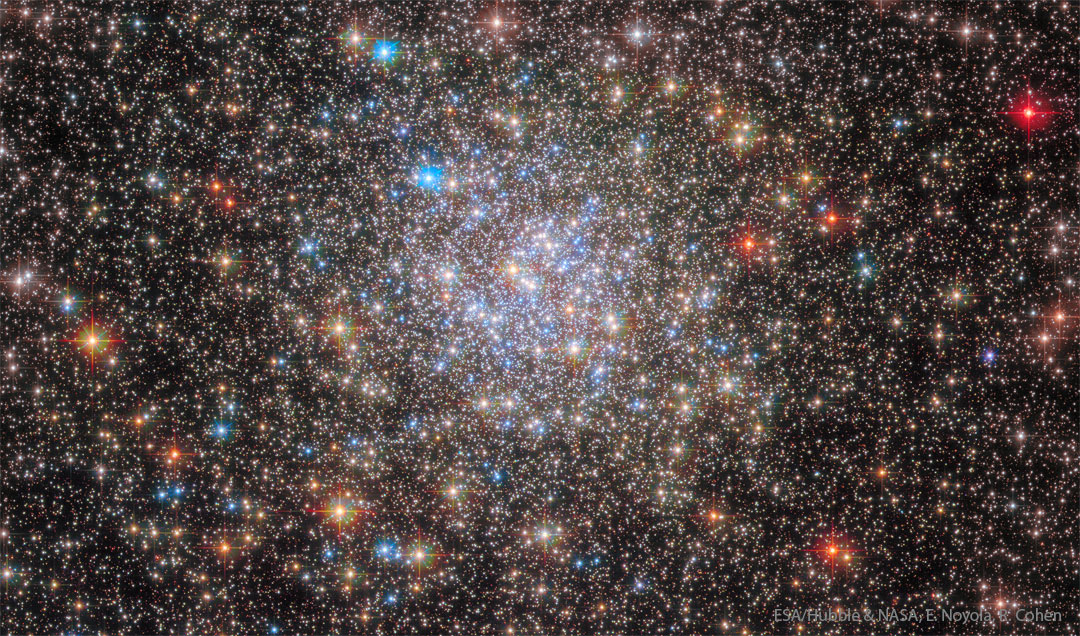哈勃图像: 球状星团NGC 6355
2023年1月30日
Globular Star Cluster NGC 6355 from Hubble
Image Credit: ESA/Hubble & NASA, E. Noyola, R. Cohen
Explanation: Globular clusters once ruled the Milky Way. Back in the old days, back when our Galaxy first formed, perhaps thousands of globular clusters roamed our Galaxy. Today, there are less than 200 left. Over the eons, many globular clusters were destroyed by repeated fateful encounters with each other or the Galactic center. Surviving relics are older than any Earth fossil, older than any other structures in our Galaxy, and limit the universe itself in raw age. There are few, if any, young globular clusters left in our Milky Way Galaxy because conditions are not ripe for more to form. The featured image shows a Hubble Space Telescope view of 13-billion year old NGC 6355, a surviving globular cluster currently passing near the Milky Way’s center. Globular cluster stars are concentrated toward the image center and highlighted by bright blue stars. Most other stars in the frame are dimmer, redder, and just coincidently lie near the direction to NGC 6355.
Tomorrow’s picture: tails tales
哈勃图像: 球状星团NGC 6355
图像提供: ESA/Hubble & NASA, E. Noyola, R. Cohen
说明: 球状星团曾经是银河系的主宰。在我们星系刚形成的远古时期,或许有数千个球状星团在我们银河系内漫游;不过,如今只剩下不到200个。自亘古以来,许多球状星团在和其他星团或银河中心的宿命性重复接近后被摧毁。如今孑遗下来的这些古天体,年龄高于地球化石及任何的其他银河结构体,也为宇宙的大概年龄提供了下限值。由于条件不再合宜,我们银河系后来几乎未再形成年轻球状星团。这幅主题视频,呈现了哈勃太空望远镜所见、老龄130亿年、目前通过银河系中心附近的孑遗球状星团NGC 6355。图像里,球状星团的成员星集中在中心附近,其中最鲜明者为泛蓝的恒星。视野里大多数的其他恒星大多较暗、较红,而且只是恰好出现在NGC 6355的方向附近。
明日的图片: tails tales

